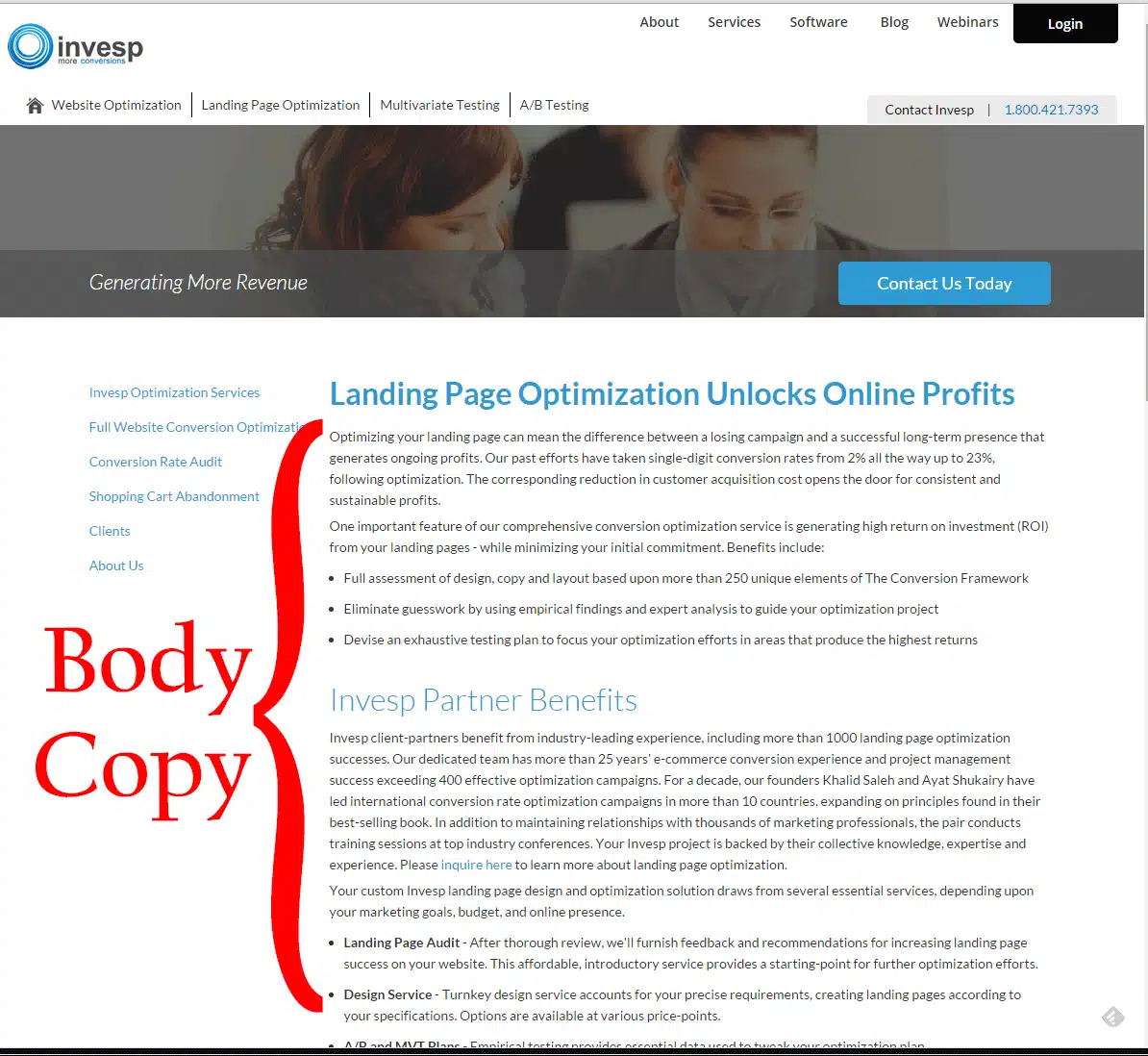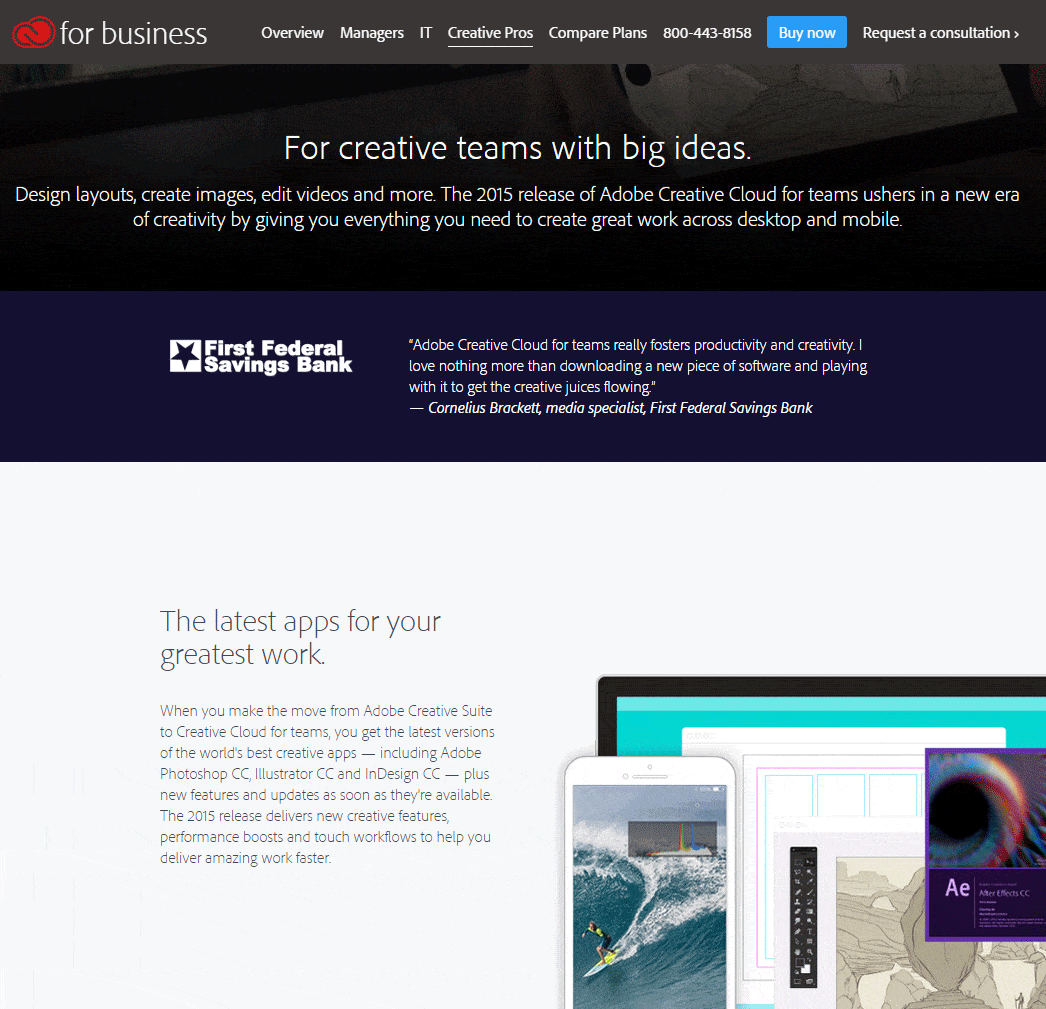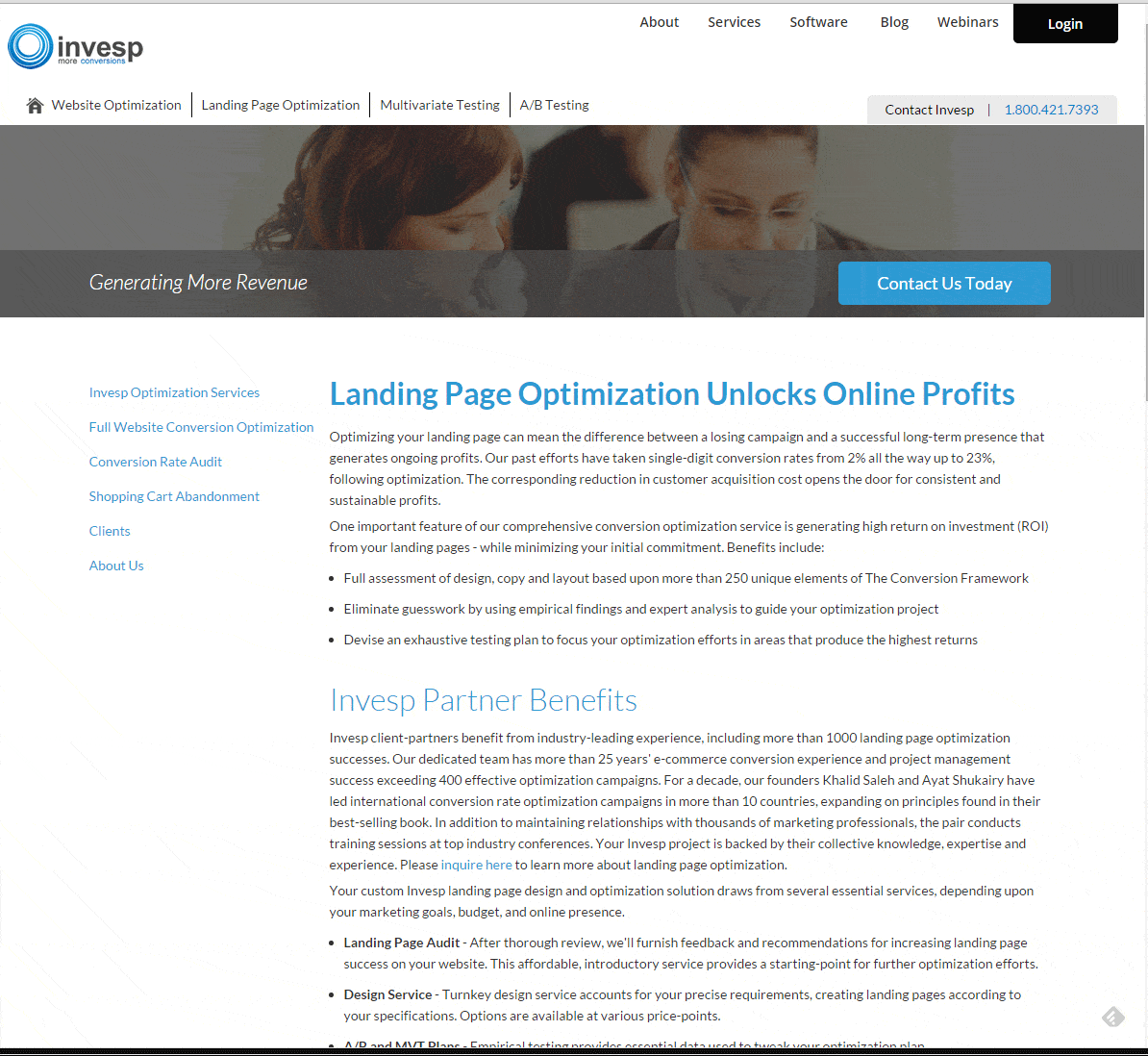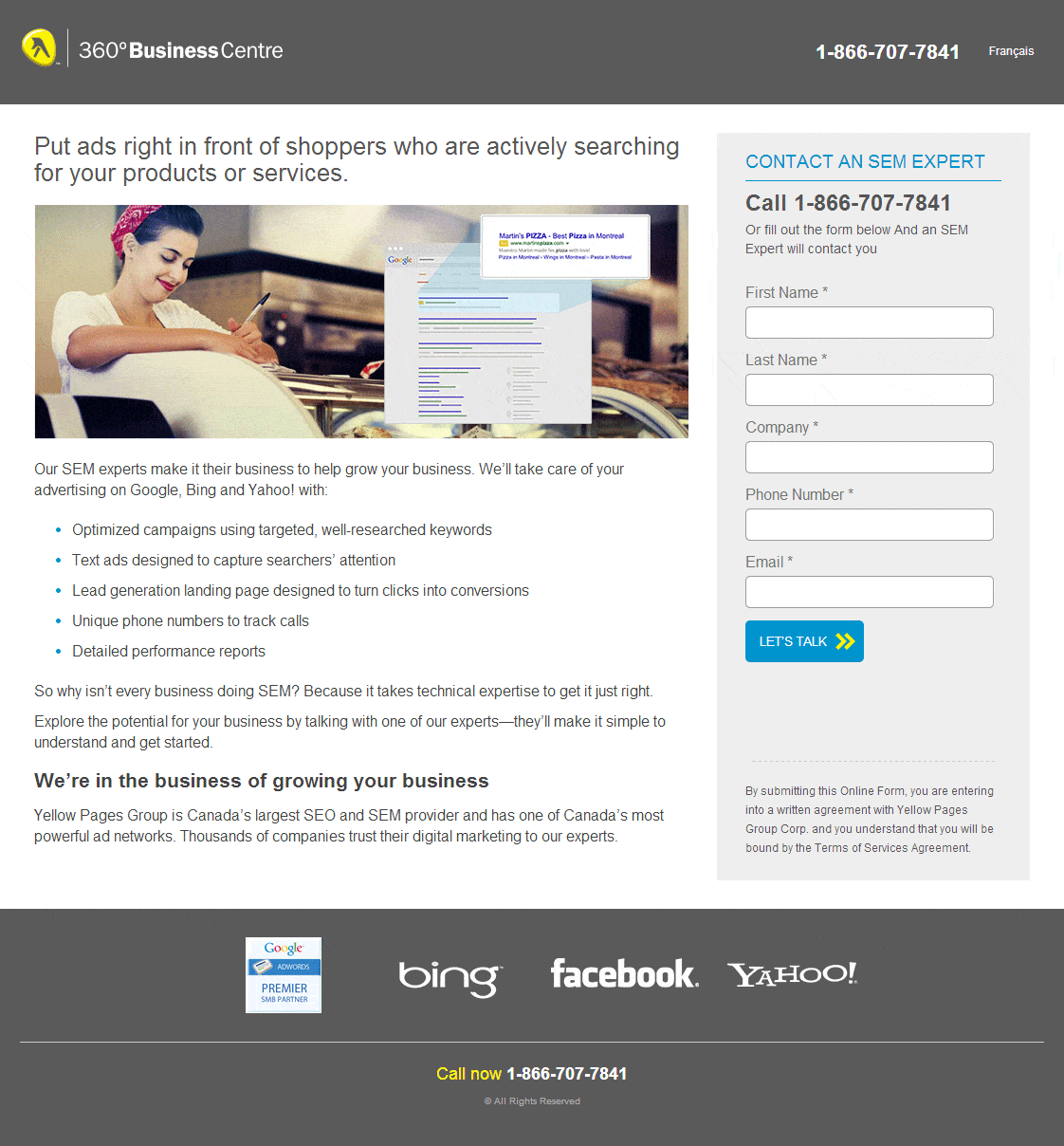It seems odd that we’ve gone through two posts about how to write web copy that sells and, so far, all we’ve written may be a few headlines. But fear not, after following the steps in Part 1 – Preparation and Part 2 – The Headline you now have a clear idea of the direction your copy needs to take and what it needs to do, including:
- Focus on the conversion goal of the page
- Speak to your target audience
- Address them where they are in the buying cycle
- Highlight the benefits of your offer
- Use keywords and/or keyphrases
- Have a headline that captures the visitor’s attention and compels her to continue reading
Turn the Mountain Into Mole Hills Part 3
Even with a clear idea of what your copy needs to do, making it do so still seems like a daunting task. So, just like we did in Parts 1 & 2, you need to split the task of writing the body copy of your page into bite-sized chunks to make it easier to get the job done.
Benefits, Benefits, Benefits: Shoppers are looking for something for themselves, even if it’s a gift for someone else. They visit your page to find what’s in it for them; the benefits they can enjoy from your business and/or products. So the easiest way to reach your conversion goal is to outline the benefits of your offer. They must be kept in mind as you write all your copy.
Focusing on benefits helps you write your copy in a way that accomplishes everything else the copy needs to do. You can tune the benefits to talk to your audience’s personas, their stage of the buying cycle and for different keywords.
“You can have everything you want in life if you help enough people get what they want.”
Zig Ziglar
Features versus Benefits: It’s important to understand the difference between benefits and features will reduce . Benefits are what your customer wants, features deliver the benefits.
- Feature:
Three-times the travel points - Benefit:
Spend more time on the beach
Benefits and features go hand-in-hand, but prioritizing benefits in your copy will deliver better results.
Check the copy on the Adobe landing page below. Not only are the headline and sub-heading both benefit-drive, but three specific benefits – design layouts, create images, edit videos – are highlighted in just eight words in the first sentence of paragraph copy.
Create An Inventory of Copywriting Devices
Another way to break your copywriting into manageable chunks is to understand the different tools you have to deliver your message on the page. Using different devices helps to segment your copy so that it is more interesting and easier to consume. Different devices can also help you reach different audiences.
- Headlines
- Sub-headings
- Paragraph copy
- Bullet points
- Testimonials
- Customer reviews and endorsements
Images, videos and graphics (yes, they are not copy, but they can communicate at least as well as copy and visitors read image captions more often than most of the rest of the copy on your page.) - The Call-to-Action
Now we’re ready to look at how to write the body copy of your page, including everything listed above, except your headlines, which we discussed in Part 2, and your call-to-action, which we’ll look at in Part 4.
Sub-Headings – Interest
(Remember in Part 2 – Headlines, we mentioned that one way to breakdown the process of writing is to think of it in terms of your overall marketing model. We used the traditional AIDA (Awareness, Interest, Desire, Action) model and promised to clarify what we mean by connecting the steps of the copywriting with the stages of the model – that’s why the word “Interest” is listed beside “Sub-Headings” above)
Regardless of whether they got to your page through a PPC ad, a link from another site or an SEO result, your visitors found something interesting enough to click the link. When they arrive, the first thing they look for is confirmation that the page indeed has what they seek.
The first step in delivering that confirmation is in your headline. In addition to all the other criteria for a good headline, it must reflect the information that attracted the visitor to the page.
If your headline is successful enough to get them to stay and read on, the next thing they will do is scan the page for more confirmation that they’ve found a page that has the solutions they’re looking for. Your sub-headings will play a major role in that scan.
Sub-headings are the mini-headlines for each section of your copy. If the job of your headline is to get the customer to stay on the page, your sub-headings’ role is to generate interest in enough to get them to read the content that supports it.
The first sub-heading should highlight your most important benefit. The second should highlight the second most important benefit, and so on for as many sub-headings as you feel are required to reach the conversion goal of your page.
Benefits featured in the sub-headings of an Invesp landing page:
Paragraph Copy – Desire
Each paragraph you write should support the benefit(s) highlighted in its sub-heading. This is where you can point out the features that deliver the benefits or the reasons that the benefit is desireable.
While all your copy should use as few words as possible, nowhere is this more important than in your paragraph copy. If your headlines and sub-headings have done their jobs, you now have the reader on a path towards your goal. Momentum is on your side and the paragraph copy needs to continue that momentum by giving the reader the final bit of confirmation that your offer is a desirable option and that they should consider taking your call-to-action.
Bullet Points, Testimonials, Customer Reviews, Images – Desire
Not all the copy you write in support of your sub-headings needs to be in paragraph form. Again, by using different content devices, you make the content more interesting and consumable – and they can help you get your message across faster and more effectively
Bullet Points: If you have more than a few benefits and/or features that you want to express, they can get lost in a paragraph. But bullet points give each of them their own special place on your page. Numbered bullets help prioritize your points.
Bullet points on a Yellow Pages landing page:
Testimonials: Testimonials are one of the most powerful content delivery devices. Customers believe what other customers say far more than they believe what marketers say. With your personas, customer buying cycle and conversion goal in mind, search your customers’ testimonials for excerpts that meet one of the criteria you have for your copy.
An impressive testimonial on the Adobe landing page:
Customer Reviews: Similar to testimonials, you can use customer reviews instead of straight copy to express some of what you want to say. And don’t shy away from a bad review. Nothing shows your commitment to customer service more than an honest response to a criticism.
Images: Another very powerful device that deserves a blog series of its own. Images are worth a thousand words, but only if they are used properly. Any image, video or graphic you choose must play a role in moving the customer along the conversion path of your page. Use them to demonstrate a benefit, how to use the product, highlight a feature or anything else that will help you create more desire for your product.
There are many other devices, including side-bars and text boxes, to break up your content into more consumable bits. You’ll need to pay attention to your page design, white space and message delivery requirements to decide which devices will help you optimize your writing and page content for conversion.
Stay tuned to this blog series for Part 4 – The Call-To-Action. A basic rule of selling is that you must ask for the sale. Your page’s call-to-action buttons and links are where you make the ask. And the copy you use to do so can make or break the sale.







